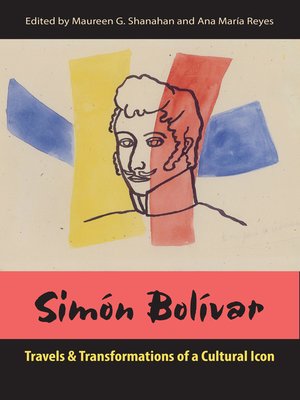
Sign up to save your library
With an OverDrive account, you can save your favorite libraries for at-a-glance information about availability. Find out more about OverDrive accounts.
Find this title in Libby, the library reading app by OverDrive.



Search for a digital library with this title
Title found at these libraries:
| Library Name | Distance |
|---|---|
| Loading... |
One of Latin America's most famous historical figures, Simón Bolívar has become a mythic symbol for many nations, empires, and revolutions used to support wildly diverse—sometimes opposite—ideas. From colonial Cuba to Nazi-occupied France to Cold War-era Slovenia, the image of "El Libertador" has variously signified loyalty, national unity, liberation, freedom, and revolt.
In this volume, an array of international and interdisciplinary scholars shows the ways Bolívar has appeared over the last two centuries in painting, fiction, poetry, music, film, festival, dance, city planning, and even reliquary adoration. They illustrate how Bolívar's body has been exalted, reimagined, or fragmented in different contexts, taking on a range of meanings to represent the politics and poetics of today's national bodies.
By critically analyzing many examples of cultural Bolivarianisms, or cults of Bolívar, this collection demonstrates the capacity of the arts and humanities to challenge and reinvent hegemonic icons and narratives and, therefore, to be vital to democracy.
Maureen G. Shanahan is professor of art history at James Madison University. Ana María Reyes is assistant professor of Latin American art history at Boston University.|One of Latin America's most famous historical figures, Simón Bolívar has become a mythic symbol for many nations, empires, and revolutions, used to support wildly diverse—sometimes opposite—ideas. From colonial Cuba to Nazi-occupied France to Soviet Slovenia, the image of "El Libertador" has served a range of political and cultural purposes.
Here, an array of international and interdisciplinary scholars shows how Bolívar has appeared over the last two centuries in paintings, fiction, poetry, music, film, festivals, dance traditions, city planning, and even reliquary adoration. Whether exalted, reimagined, or fragmented, Bolívar's body has taken on a range of different meanings to represent the politics and poetics of today's national bodies. Through critical approaches to diverse cultural Bolivarianisms, this collection demonstrates the capacity of the arts and humanities to challenge and reinvent hegemonic narratives and thus vital dimensions of democracy.







